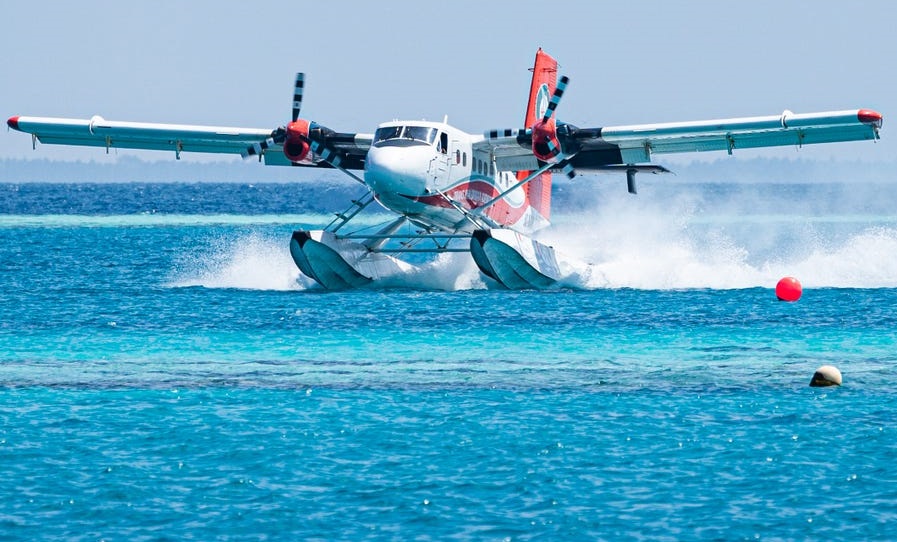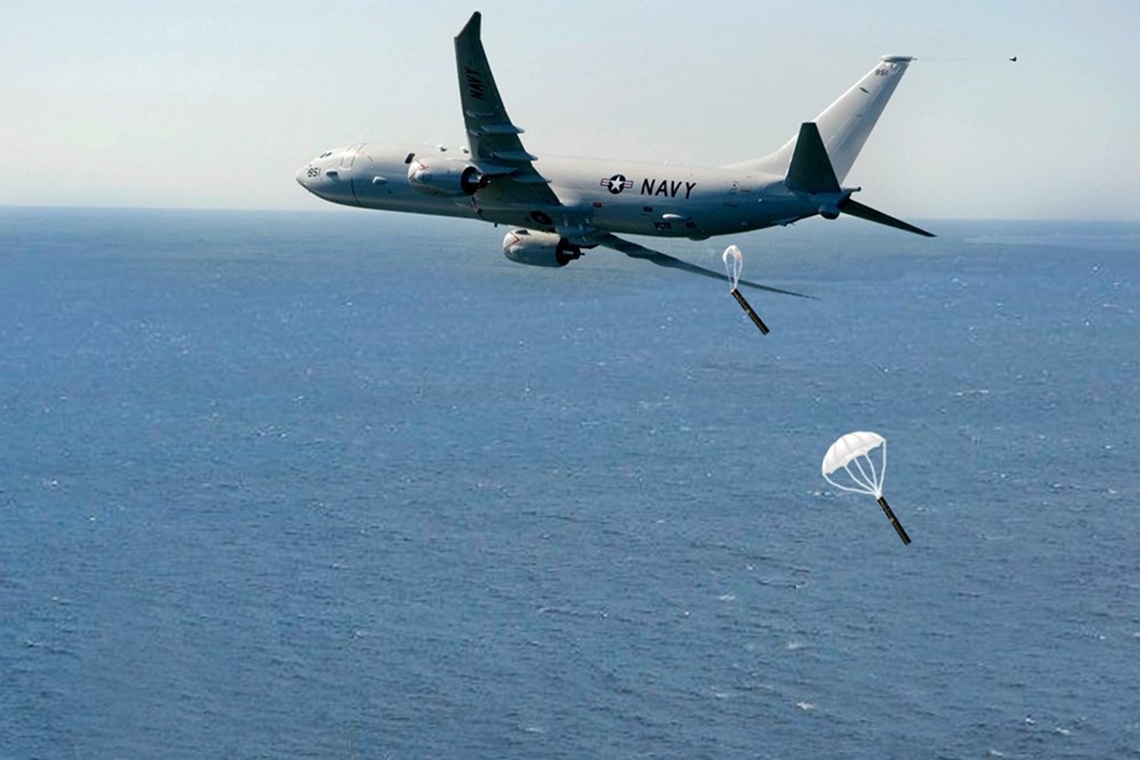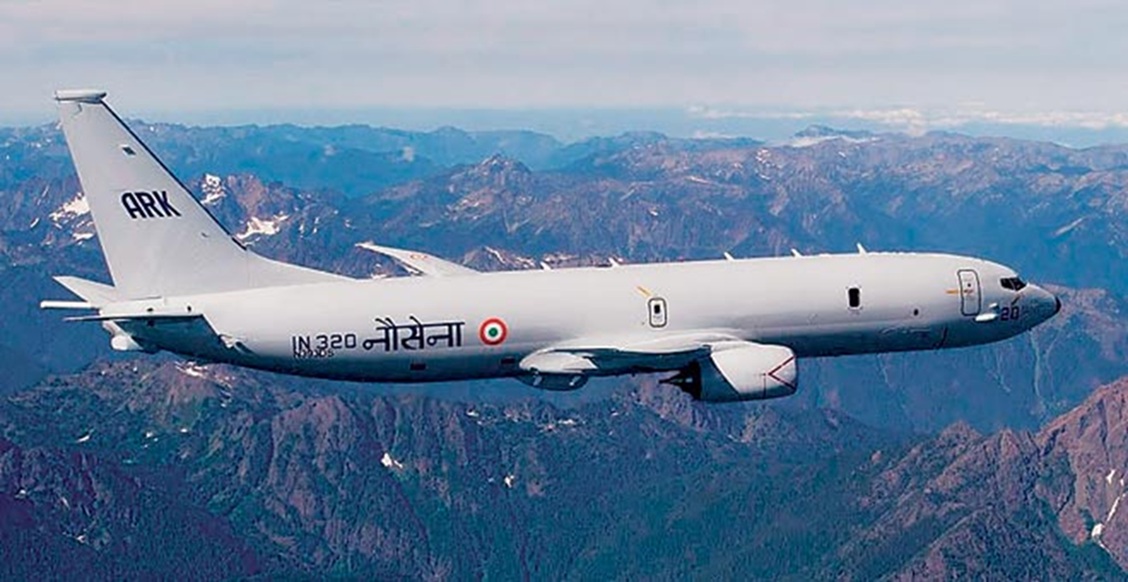The author highlights the requirement of ‘Amphibious Seaplanes’ for the Indian Navy against the backdrop of the emerging geopolitical scenario in Indian Ocean Region (IOR) and the challenges being faced by Hindustan Aeronautics Limited (HAL) in indigenising these seaplanes for Indian Navy.
Introduction
During the last Defence Expo1 (DEFEXPO 2020), the famous Japanese US-2 amphibious seaplane team arrived Lucknow along with a high-level delegation from Japan headed by their Director-General (Logistics). The team extended their stay in India this time to meet the top officials of Minister of Defence (MoD) towards working out an agreement to transfer the seaplanes to Indian Navy.
Current developments at Line of Control (LoC) have reinforced the requirement of amphibious seaplanes for the Indian Navy. In case Indian Army and People’s Liberation Army (PLA) lock horns along LoC, a full-blown naval war at high seas with the Chinese cannot be ruled out. If so, transporting troops and materials to our naval warships deployed far from subcontinent would become a challenge for the Indian Navy.
Besides, China has indigenously developed the world’s largest flying seaplane (AG6002) to ferry their troops. These planes are capable of landing anywhere in IOR and return without any refuelling. Indian Navy does not have such capability to transit to the South China sea and back.
The necessity of seaplanes was set forth by the Indian Navy in the year 2011. Navy wants to position these aircraft at the Andaman and Nicobar Islands for giving a layer of security coverage to the entire Bay of Bengal region. In addition, there is a need to check the movements of vessels along the sea line heading to ‘Malacca Straights’. These aircraft can also be deployed along the western seaboard or even at Lakshadweep.
Since 20113, India and Japan have been discussing the transfer of amphibious aircraft, US-2 to India. Japanese were the first who responded to the Request for Information (RFI) of MoD and later US-2 was shortlisted by Indian Navy. Both the countries came close to a deal in 2016 for transfer of 12 Shin Maywa make US-2 amphibious seaplanes. But in the year 2017, lack of funds kept India away from executing this $1.65 billion deal. The priority of Indian Navy later got shifted towards acquiring deck borne helicopters4. Thereafter Indian Navy kept their amphibious aircraft acquisition plan in cold storage view lack of funds
After the ‘Defence Expo 2018’ at Chennai, the same Japanese company concluded a contract with M/s Mahindra Defence to start a production and maintenance facilities for the subject aircraft in India5. Now the Japanese are willing to manufacture this aircraft in India under ‘Make in India’ banner by collaborating with M/s Mahindra Defence.
HAL Sensed the Opportunity
HAL dished out a Request for Information (RFI) in Oct 20156, immediately after the India-Japan announcement on US-2 deal. HAL jumped into the race under the ‘Make in India’ programme towards manufacturing the first-ever amphibious seaplane for Indian Navy. Albeit the Indian Navy dropped the plan of induction of seaplanes from abroad due to paucity of funds, HAL kept their hopes alive.
Can Indian Navy wait for HAL to deliver amphibious seaplanes?
Constraints
Sudden developments in the geopolitical scenario is always a challenge to the nations. India is currently passing through a very critical stage where the nation’s security is being challenged. Since many military decisions remain confidential, whether India will wait for HAL to provide a seaplane or buy the same from abroad is still not clear. The shift in policy decisions at the corridors of power could happen overnight. No agency has come-up officially in this regard. The production status of seaplanes at HAL is not available in the public domain. The author relies on open-source information to draw conclusions.
Role of Amphibious Seaplanes in Indian Navy
Search and Rescue (SAR) and Humanitarian Assistance and Disaster Relief (HADR)7 at high seas cannot be undertaken by Indian Navy with the present helicopters based at shores since the distance to disaster site is more. A seaplane can easily conduct all-weather high-speed rescue operation for a ditched aircraft or distressed ship/submarine at high seas. Seaplane has long endurance and can cruise at a speed of 500/ 600 kmph. This platform is ideal for combat missions including rapid deployment and evacuation of commando /troops on water bodies where the airstrips are not available. The seaplanes can also be used for surveillance and reconnaissance missions as well as for aerial fire extinguishing.
In the current geopolitical scenario, a war with one of our immediate neighbour cannot be ruled out. In case our military vessels meet with any distress at high seas, immediate evacuation of casualties from the ship to safe destination is a big challenge. Henceforth amphibious seaplanes could become ideal support for naval ships deployed far from the mainland at high seas.
Opportune Time for HAL
Since price is always a concern for India, HAL has sensed an opportunity to exploit the situation. When the Indian Navy suspended the acquisition plan of seaplanes due to lack of funds in the year 2017, the focus shifted back to the indigenisation programme of seaplanes. HAL has two options. Either to design and develop a new seaplane or modify an existing land-based aircraft to the seaplane. The latter option was chosen view price and time constraints.
HAL identified the ‘tried and tested’ aircraft platform, Dornier 228 for the project and came up with an ambitious task of converting the Dornier 228 into a Seaplane. Dornier is a 38-year-old Short Take-Off and Landing (STOL) German aircraft currently manufactured under license by HAL for Indian Navy and Coast Guard. HAL is currently in touch with the leading airframe designers in the world for restructuring the Dornier. Aircraft Research and Design Centre (ARDC), Bengaluru is also helping HAL in designing this amphibious seaplane.
Challenges for HAL
Converting the fuselage airframe of Dornier 228 into a hydrodynamic boat structure entail extensive airframe modification. The only option available for HAL is to mount pontoons below the fuselage. Since Dornier 228 is a small aircraft, attaching a retractable pontoon at the belly could do the trick. Though it appears to be an easy proposition, the attempt of re-designing and converting an aircraft initially designed for land operations to a seaplane is very intricate. Seaplane is a combination of a plane and a boat, and hence HAL needs expertise on hydrodynamics and hull construction. Following are the challenges HAL could face during the modification9.
- Designing and developing airtight chamber/pontoon and housing it under the belly between the undercarriage.
- Strengthen the current airframe structure to take on the frictional load arising while landing at sea.
- Currently, the engines of Dornier aircraft are below the wings, which may take water splash at high sea state. Hence feasibility to relocate engines as wing top mount may be explored.
- Optimisation of hydrostatic and dynamic stability of pontoon.
- Weight of pontoon should be kept at a minimum and hence appropriate composite needs to be identified.
- The contour of pontoon should be ‘Tumblehome’, to reduce the hydrodynamic drag which could hinder smooth take off from water bodies.
- Immunity from crosswind as well as sea-waves at high sea state.
- Stable aerodynamic characteristic of modified aircraft structure for enhanced performance.
- Rigorous flight and sea trials for getting safety certification at various stages is a tough call.
Way Ahead-Retractable Amphibious Pontoon Technology (RAPT)
- RAPT10 is a patented technology from Tigerfish Aviation, Australia. HAL can adopt this technology since the Dornier is small in size.
- The pontoon retracts after take-off and will come down only prior to landing at sea. The current undercarriage will remain as it is to facilitate take-off and landing from the runway. Once retracted into the fuselage, the drag instilled by pontoon reduces considerably.
- Retractable floats gave a great improvement in thrust and level turn at high speeds. The seaplane in the retracted position improves the flight performance including steady level turn, higher service ceiling, better performance while take-off, climb, descent and landing.
Possible Outcome
With the kind of challenges being listed above, there is a fair chance of subject project becoming an academic one for HAL. From prototyping to series production, the project could take many years to complete. Detailed flight and sea trial procedures and programmes are to be formulated and validated by the Centre for Military Airworthiness & Certification, CEMILAC for airworthiness certification. CEMILAC will certainly make the process tougher view flight safety concerns.
By knowing the pace at which HAL can progress, it is apparent that the Indian Navy may have to wait for at least ten years to get an operational fly worthy amphibious seaplane from HAL, that too with limitations. This modified Dornier may not be meeting the Quality Requirements (QRs) set by the Indian Navy.
Can Indian Navy limits it’s capability against enemies till HAL produces an aircraft? Can we afford to sacrifice the lives of our seamen onboard a naval vessel under distress? Can we stop sending our naval ships for war beyond IOR?
Alternative Available for HAL
Since HAL is not sure about the outcome of current modification on Dornier, HAL can concurrently get back to the drawing board for design and development of an all-new seaplane under the ‘Make in India’ banner. They can tie-up with one of the leading domestic hull design agency to construct a hydrodynamically cleared composite boat over which the aerodynamic fuselage can be flushed. Wings, vertical tailplane and wing top power plants can be designed and integrated into this airframe. In case the present attempt of modification on Dornier fails, this alternative could become a face-saver. HAL should pursue this alternative in line with the QRs currently set by Indian Navy/MoD so that they can join for the next bid.
Recourse for the Indian Navy
In case HAL falls short of providing an immediate solution, the Indian Navy could look for a reliable supplier of amphibious seaplanes. Waiting for a disaster to prove the necessity to Government is mere idiocy. Early induction of seaplanes is a necessity under the prevailing geopolitical situation to prove the fighting prowess of Indian destroyers and frigates at high seas beyond IOR. Allocation of the capital budget for acquiring at least six seaplanes can be considered immediately or during the next year budget.
Title Image Courtesy: https://www.businessinsider.in/business/news
References
[3] http://ajaishukla.blogspot.com/2014/01/shinmaywa-us-2-seaplane-could-be.html
[7] http://www.spsnavalforces.com/story/?id=451
[8] https://defenceforumindia.com/threads/india-starts-working-on-its-own-seaplane.78565/
[9] http://theses.gla.ac.uk/4030/1/2012canamarleyvaMSCR.pdf
[10] http://www.seaplaneinternational.com/2010/04/14/retractable-floats-after-retractable-gears/
Disclaimer: The views and opinions expressed by the author do not necessarily reflect the views of the Government of India and Defence Research and Studies








